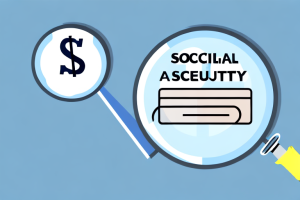Retirement planning is a critical aspect of financial security and peace of mind. Deciding how much money you need to retire and never work again requires careful consideration and strategic calculation. In this comprehensive guide, we will walk you through various factors to consider, such as your retirement needs, desired lifestyle, expenses, investment strategies, and maximizing tax efficiency. By the end of this article, you will have a clear understanding of how to determine your retirement nest egg and ensure that your golden years are financially stable.
Calculating Your Retirement Needs: A Step-by-Step Guide
When it comes to calculating your retirement needs, it’s essential to start by examining your current financial situation. Begin by assessing your assets, liabilities, and savings. Next, determine an estimation of your desired retirement lifestyle, including expenses for housing, healthcare, travel, hobbies, and utility bills. Once you have a comprehensive idea of your future financial requirements, consider how long you expect to live post-retirement—the life expectancy in your country can be a valuable benchmark. By factoring in anticipated inflation rates and adjusting for potential healthcare costs, you can arrive at a ballpark figure for your retirement savings goal.
Understanding the Basics of Retirement Planning
Retirement planning entails not only accumulating sufficient savings, but also understanding investment strategies and the role of different retirement income sources. Start by considering your employer-sponsored retirement plans, such as 401(k) or pension plans, and determine the contribution amounts needed to secure a comfortable retirement.In addition, social security can play a significant role in providing a steady income stream during your retirement years. Familiarize yourself with the requirements, benefits, and options available to optimize social security benefits and integrate them into your overall retirement plan.
Factors to Consider When Determining Your Retirement Nest Egg
Several factors influence the size of your retirement nest egg. First and foremost, consider your desired retirement lifestyle. Are you planning to travel extensively, pursue expensive hobbies, or downsize your home? Each of these choices will have financial implications that can impact your retirement savings requirements.Another critical factor is the age at which you plan to retire. The earlier you retire, the longer your retirement period will be, necessitating a larger nest egg to sustain you for those extra years. Furthermore, different regions have varying costs of living, so consider how your retirement expenses might change if you relocate.Additionally, take into account your health circumstances and potential long-term care needs. While it’s impossible to predict everything, considering these factors will help you refine your retirement savings estimate.
Estimating Your Desired Retirement Lifestyle and Expenses
Estimating your desired retirement lifestyle and expenses involves reflecting on your current spending patterns and visualizing how they might change during retirement. Assess your current budget, including expenses for housing, utilities, transportation, entertainment, and healthcare.Once you have a baseline, consider adjustments for potential changes in your lifestyle. For instance, you might anticipate downsizing your home, which could impact your housing and utility costs. Additionally, take into account travel plans, whether you intend to pursue expensive hobbies or how your healthcare needs might evolve over time.By adopting a meticulous approach to estimating your expenses, you can develop a realistic budget that aligns with your retirement goals.
The Importance of Start Saving Early for Retirement
One fundamental principle of retirement planning is the significance of starting early. By beginning to save for retirement as early as possible, you can make the most of the power of compound interest.Even relatively small contributions early in your career can accumulate substantially over time, thanks to compounding. By taking advantage of employer 401(k) plans or individual retirement accounts (IRAs), you can benefit from tax advantages and ensure that your money grows significantly before you retire.
How Inflation Affects Your Retirement Savings
Inflation is a crucial factor to consider when determining how much money you need to retire. Over time, the cost of goods and services tends to rise, eroding the purchasing power of your retirement savings. To safeguard your retirement funds against inflation, it’s important to account for average inflation rates when calculating your retirement needs. Consider investing a portion of your savings in assets that have historically outpaced inflation, such as stocks or real estate, to ensure that your nest egg maintains its value throughout your retirement.
Exploring Different Retirement Income Sources
When planning for retirement, it’s essential to explore and diversify your sources of retirement income. While employer-sponsored retirement plans and social security payments are common income streams, there are additional options to consider.For example, you might generate income from rental properties, investments, or royalties. Some individuals choose to work part-time or start a small business during retirement to supplement their income. By maximizing your income sources, you lessen the reliance on a single source and enhance your financial stability.
Strategies to Boost Your Retirement Savings
When it comes to boosting your retirement savings, there are several effective strategies to consider. One approach is to increase your contributions to employer-sponsored retirement plans, taking full advantage of any employer matches or contribution limits.Additionally, you may want to explore individual retirement accounts (IRAs), which offer tax advantages on contributions and potential growth. Consider contributing to both traditional and Roth IRAs, depending on your tax situation and long-term goals.Another strategy is to automate your savings. By setting up automatic contributions to your retirement accounts, you can ensure consistent savings without the temptation to spend that money elsewhere.Finally, keep a close eye on investment performance and adjust your portfolio accordingly. As retirement approaches, it’s generally wise to shift toward more conservative investments to protect your savings from potential market volatility.
Investing for Retirement: Tips and Best Practices
Investing for retirement is a long-term endeavor that requires careful consideration and adherence to best practices. Diversification is a key principle to reduce risk and potentially increase returns. By investing in a mix of stocks, bonds, and other asset classes, you can spread risk across different sectors and asset types.Additionally, consider your risk tolerance and time horizon before making investment decisions. While stocks offer higher growth potential, they also involve greater volatility. Bonds, on the other hand, provide more stability but may have lower returns.Monitoring your investment performance regularly and consulting with a financial advisor can help you make informed decisions and adjust your investment strategy to align with your retirement goals.
The Role of Social Security in Your Retirement Plan
Social security is a crucial component of most individuals’ retirement plans. To make the most of your social security benefits, it’s important to understand the eligibility requirements, claiming strategies, and potential impact of delaying benefits.Take the time to explore the various claiming options available. While you can claim benefits as early as age 62, delaying benefits until a later age, typically full retirement age or beyond, can significantly increase your monthly payments.Assess your financial situation and consider factors such as life expectancy, other retirement income sources, and overall financial needs to determine the optimal time to claim social security benefits.
Assessing the Impact of Healthcare Costs on Your Retirement Budget
Healthcare costs can have a significant impact on your retirement budget. It’s crucial to consider the cost of health insurance premiums, deductibles, copayments, and out-of-pocket expenses when calculating your retirement needs.Medicare, the federal health insurance program for individuals aged 65 and older, can help alleviate some of these costs. However, it’s important to understand the different Medicare plans and associated expenses. Researching Medicare supplement plans (Medigap) and Part D prescription drug coverage options can help ensure you are adequately covered without facing a financial burden.
Creating a Realistic Budget for a Post-Retirement Life
Creating a realistic budget for your post-retirement life is essential for long-term financial stability. Assess your overall retirement income, including social security payments, pensions, and investment income.Next, itemize your expenses, including housing, transportation, healthcare, utilities, leisure activities, and unexpected costs. Consider how your spending patterns might change in retirement, and be sure to allocate a portion of your budget for leisure and travel.By evaluating your income and expenses in detail, you can create a budget that ensures you can meet your essential needs while also enjoying a fulfilling retirement.
How Long Will My Retirement Savings Last?
One of the most common concerns individuals have about retirement is whether their savings will last through their entire lifespan. The answer depends on several factors, including your retirement lifestyle, expenses, and investment returns.To estimate how long your retirement savings will last, consider how much you withdraw annually from your portfolio. The “4% rule” is a commonly used guideline – it suggests withdrawing no more than 4% of your portfolio each year, adjusted for inflation.By working with a financial advisor, analyzing your spending patterns, and adjusting your withdrawals as necessary, you can help ensure that your retirement savings last as long as you need them to.
Understanding the 4% Rule and Safe Withdrawal Rates in Retirement
The “4% rule” is an important concept in retirement planning. It suggests that if you withdraw 4% of your initial portfolio balance in the first year of your retirement, adjusting for inflation in subsequent years, your money should last approximately 30 years.This rule provides a helpful starting point, but it’s essential to reassess regularly based on factors such as investment returns, life expectancy, and changes in your financial situation. Consider conducting periodic reviews of your retirement plan and working closely with a financial advisor to fine-tune your withdrawal strategy and ensure your long-term financial well-being.
Maximizing Tax Efficiency in Your Retirement Portfolio
Maximizing tax efficiency in your retirement portfolio can significantly impact your overall financial picture. Consider using tax-advantaged retirement accounts, such as traditional IRAs, Roth IRAs, and employer-sponsored 401(k) plans, to reduce your taxable income and potentially defer tax payments.Diversifying your investments across different account types can provide flexibility in managing your tax liability during retirement. By strategically utilizing tax breaks, deductions, and credits available to retirees, you can minimize taxes and keep more of your hard-earned money in your pocket.
Evaluating the Benefits of Delaying Social Security Benefits
Delaying social security benefits can have substantial advantages in terms of your retirement income. While you become eligible for benefits as early as age 62, delaying claim approval can result in increased monthly payments.By postponing the claiming of social security benefits until full retirement age or beyond, your monthly payments will generally increase due to delayed retirement credits. This strategy can be particularly beneficial for individuals in good health and with other sources of income during the early years of retirement.
Navigating Market Volatility in Retirement: Dos and Don’ts
Market volatility can be concerning for retirees heavily dependent on their investment portfolios. When the stock market experiences fluctuations, it’s crucial to keep a calm and rational approach.Some dos and don’ts to navigate market volatility in retirement include avoiding knee-jerk reactions, adhering to your long-term investment strategy, and focusing on diversified portfolios. Stay informed about market trends but avoid making impulsive decisions based on short-term market movements. Regularly review your investment allocations and consider consulting with a financial advisor for guidance during turbulent market periods.
Implementing a Well-Diversified Investment Strategy for Long-Term Growth
Implementing a well-diversified investment strategy is essential for long-term growth and financial stability during retirement. Diversification involves spreading your investments across different asset classes, industries, and geographies to mitigate risks.By investing in a mix of stocks, bonds, real estate, and other asset types, you can potentially enhance your risk-adjusted returns. Periodically rebalance your portfolio to maintain your desired asset allocation and periodically assess your risk tolerance and investment goals to ensure your strategy reflects your changing needs.
Preparing for Unexpected Expenses During Retirement
Planning for unexpected expenses is crucial during retirement to avoid financial distress. Set up an emergency fund to cover unforeseen costs, such as medical emergencies or home repairs.Additionally, consider purchasing insurance policies that provide protection and mitigate potential financial burdens. Long-term care insurance, for example, can safeguard against the high costs associated with extended healthcare needs.By being proactive and accounting for unexpected expenses within your retirement plan, you can minimize the stress and financial impact of such occurrences.
In conclusion, determining how much money you need to retire and never work again requires a systematic approach. By considering factors such as your retirement lifestyle, expenses, investment strategies, and maximizing tax efficiency, you can develop a comprehensive retirement plan that ensures your financial security and allows you to truly enjoy your golden years.



